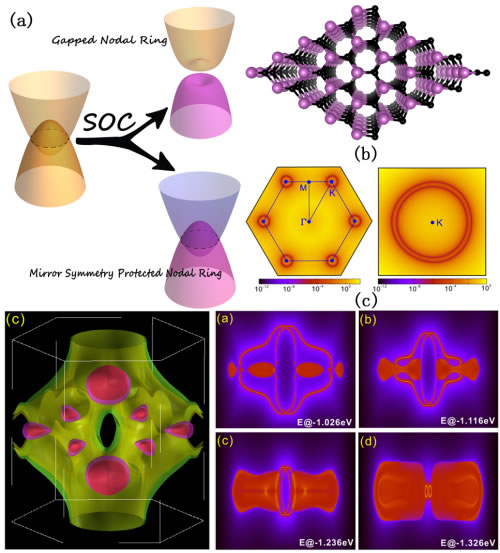With the vigorous development of topological materials in recent years, people have found novel quasi-particles in solid materials one after another, thus simulating particles that originally exist only in high-energy physics. For example, the low-energy electrons in the edge state (two-dimensional)/surface state (three-dimensional) of graphene and topological insulators can be regarded as massless Dirac fermions; the low energy electrons of quasi-metals can be distinguished by chirality. Yoneko portrays. In addition, the discovery of multiple degenerative fermions, point-line fermions, etc., has greatly extended the quasiparticle family in condensed-state systems. How to find and even design these novel fermions in the solid-state material system becomes one of the emerging frontier fields of condensed matter physics. Recently, the Changkai Research Group of the State Key Laboratory of Superlattices, Institute of Semiconductors, Chinese Academy of Sciences, discovered the coexistence of point-line fermions and triple degenerate fermions in the binary MoC. The stable point-line fermions in the existing materials are very rare. The point-to-line fermions induced by band reversal are often destroyed by the non-negligible spin-orbit coupling effect. MoC was discovered as a type of up to 60 The carburized material has a lattice point group of D_3h, and the energy band near the Fermi surface is mainly composed of the d orbital of Mo atoms. The C_3v subgroup in the plane guarantees the existence of the triple degenerate fermions, while the mirror inversion operation of the σh subgroup in the Z direction provides symmetry protection for the stability of the point-line fermions. The related papers were published in Chinese Physics Letters (2017, 34(2): 027102). Based on the research of MoC, Chang Kai Group further studied the electronic structure of another stable material TaS. TaS is very similar to MoC, and there is also the existence of triple degenerate fermions and point-line fermions in the physical energy band. The difference is that under the spin-orbit coupling, a set of point-line fermions of TaS remains stable under mirror inversion, while another set of point-line fermions open up the non- mediocre band gap, high density The Fermi surface search suggests that in the open band gap, a new Fermi Fermi was born. This prediction is proved by a strict chiral calculation. Since the above fermions are in different energy spaces, when projecting onto a suitable surface and performing ARPES observations, one will see the transmutation of topological edge state configuration. As a result, TaS becomes the first observable electronic structure containing novel fermions, point-line fermions, and fermions as novel materials, providing a new platform for studying the coexistence and transformation of various topological states. . This achievement was published in Physical Review B (2017, 96(4): 045121) and was highlighted by the journal. The above research has been supported by the National Natural Science Foundation of China. Sunroom Attached To House,All Season Sunroom,Aluminum Sunroom Kits,All Glass Sunroom Lemon Building Material Co., Ltd. , https://www.lbmaluminumpergolas.com